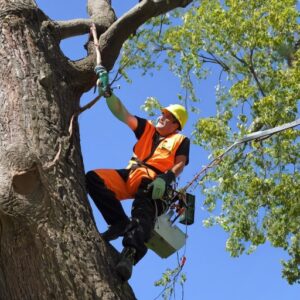5 Reasons You Might Need to Rent a Forklift in Fort Worth, TX
Forklifts are indispensable tools in various industries, providing the heavy lifting power necessary for efficient operations. In Fort Worth, Texas, where industries like manufacturing, construction, warehousing, and logistics thrive, the demand for forklifts is significant. Whether you’re a small business owner or a large-scale industrial operation, there are times when renting a forklift becomes not just a convenience, but a necessity. In this article, we’ll explore five compelling reasons why you might need to rent a forklift in Fort Worth, TX.
Seasonal Demands
Fort Worth experiences fluctuations in demand across different industries throughout the year. In sectors like retail, agriculture, and construction, seasonal peaks often require additional handling and lifting capacity. For example, during the holiday season, retail warehouses may need extra forklifts to manage the influx of inventory. Similarly, agricultural businesses might require forklifts during harvest seasons to transport crops efficiently. Renting a forklift allows businesses to scale their operations according to seasonal demands without the burden of long-term ownership costs.
Equipment Downtime
Equipment breakdowns are an inevitable part of industrial operations. When a forklift undergoes repairs or maintenance, it can disrupt workflow and lead to delays in project timelines. Renting a forklift in Fort Worth provides a practical solution to mitigate downtime. Instead of waiting for repairs or purchasing a new forklift, businesses can quickly rent a replacement to keep operations running smoothly. This flexibility minimizes productivity losses and ensures that projects stay on track.
Temporary Projects
In Fort Worth’s dynamic business landscape, companies often undertake temporary projects that require additional lifting equipment for a limited duration. Whether it’s a short-term construction project, a special event, or a warehouse relocation, renting a forklift offers the flexibility to meet the specific needs of these ventures. Instead of making a significant capital investment in purchasing a forklift for a short-lived project, businesses can opt for cost-effective rental options tailored to the project’s duration and requirements.
Fluctuating Workloads
Industries with fluctuating workloads, such as distribution centers and manufacturing facilities, often face challenges in maintaining optimal levels of equipment. During peak periods, when workload increases, the existing fleet of forklifts may be insufficient to handle the surge in demand. Renting additional forklifts in Fort Worth enables businesses to scale up their lifting capacity temporarily, ensuring that operations run smoothly during busy periods. Once the workload returns to normal levels, companies can easily return the rented forklifts without any long-term commitments.
Testing New Equipment
For businesses considering purchasing a forklift, renting provides an excellent opportunity to test different models and configurations before making a significant investment. Fort Worth businesses can rent various forklift types, including electric, propane, and diesel-powered models, to evaluate their performance in real-world conditions. By renting and experimenting with different forklifts, companies can make informed decisions based on factors such as maneuverability, fuel efficiency, and load capacity. This hands-on experience helps businesses choose the most suitable forklift that aligns with their operational needs and budget constraints.
Conclusion
In Fort Worth, TX, renting a forklift offers numerous advantages for businesses facing diverse challenges and opportunities. Whether it’s adapting to seasonal demands, mitigating equipment downtime, managing temporary projects, addressing fluctuating workloads, or testing new equipment, renting provides the flexibility and cost-effectiveness that businesses require to thrive in a competitive environment. By leveraging the rental services offered by reputable forklift providers in Fort Worth, businesses can access high-quality equipment, minimize operational disruptions, and optimize their lifting capabilities to meet evolving demands. With the convenience of forkLift rental Fort Worth options, businesses can focus on achieving their goals efficiently without the burden of long-term commitments associated with forklift ownership.
Battling Smoke Damage in Los Angeles: A Comprehensive Guide
Los Angeles, with its sprawling urban landscape and diverse communities, is no stranger to the challenges posed by wildfires. While these natural disasters wreak havoc on lives and properties, one of the most persistent aftermaths is smoke damage. The insidious nature of smoke can infiltrate homes and businesses, leaving behind a trail of destruction and health hazards. In this comprehensive guide, we’ll delve into effective strategies for handling smoke damage in Los Angeles, ensuring a thorough restoration process and a safer environment for all.
Understanding Smoke Damage
Smoke damage is more than just an unpleasant odor lingering in the air. It encompasses a range of issues, including soot residue, discoloration of surfaces, and potential health risks from inhaling harmful particles. In Los Angeles, where wildfires are a recurring threat, smoke damage can affect properties even if they are not directly in the path of the fire. The microscopic particles in smoke can travel long distances, settling on surfaces and infiltrating every nook and cranny of a building.
Assessment and Safety Precautions
Before embarking on any cleanup efforts, it’s crucial to conduct a thorough assessment of the extent of smoke damage. This assessment should encompass both visible signs of damage, such as soot stains on walls and ceilings, as well as potential hidden hazards, such as compromised air quality. Additionally, it’s essential to prioritize safety at every step of the process. This includes wearing appropriate protective gear, such as respirators and gloves, to minimize exposure to harmful particles.
Effective Cleaning Techniques
Cleaning up smoke damage requires a systematic approach to ensure thorough removal of soot and other contaminants. Begin by ventilating the affected area to allow fresh air to circulate and dissipate lingering smoke odors. Next, tackle surfaces using specialized cleaning products designed to break down soot and grime without causing further damage. For porous materials such as upholstery and carpets, professional cleaning services may be necessary to fully eliminate smoke odors.
Addressing Air Quality Concerns
In addition to visible damage, smoke can also compromise indoor air quality, posing health risks to occupants. Installing high-efficiency particulate air (HEPA) filters in HVAC systems can help trap airborne particles and improve air quality. Air purifiers equipped with HEPA filters can also be deployed to further enhance indoor air quality. Regular monitoring of air quality levels is essential to ensure that occupants are not exposed to harmful pollutants.
Preventing Future Damage
While immediate cleanup efforts are crucial, preventing future smoke damage is equally important. This entails implementing proactive measures to fortify properties against potential wildfire threats. This may include installing ember-resistant vents, maintaining a defensible space around the property, and using fire-resistant building materials. Additionally, educating residents about wildfire preparedness and evacuation protocols can help mitigate the impact of future disasters.
Seeking Professional Assistance
In some cases, the extent of smoke damage may require professional intervention. Restoration companies specializing in smoke damage cleanup possess the expertise and equipment necessary to address even the most severe cases of contamination. When selecting a restoration company, be sure to choose one with experience in handling smoke damage specifically, as the cleanup process differs from other types of property damage.
Conclusion
Smoke damage Los Angeles poses a significant challenge for residents and property owners in Los Angeles in the aftermath of wildfires. However, with proper assessment, effective cleaning techniques, and a commitment to safety, it is possible to restore properties to their pre-damage condition and mitigate health risks associated with smoke exposure. By implementing preventive measures and seeking professional assistance when needed, individuals can better protect their homes and communities from the devastating effects of smoke damage. Together, we can navigate the challenges posed by wildfires and ensure a safer, more resilient Los Angeles for generations to come.
Unlocking the Power of Shot Blasting: 4 Reasons Why It’s Essential
In the realm of industrial surface preparation, shot blasting stands as a powerful technique. It’s a process that might not be immediately familiar to everyone, but its significance reverberates across numerous industries. Shot blasting involves propelling abrasive materials at high speeds onto a surface, effectively removing contaminants, coatings, or imparting a specific finish. In this comprehensive guide, we delve into what shot blasting is and why it’s indispensable across various sectors.
Surface Preparation and Cleaning
One of the primary applications of shot blasting lies in surface preparation and cleaning. Whether it’s removing rust, paint, scale, or other surface contaminants, shot blasting is unparalleled in its efficiency and effectiveness. Traditional methods like manual scraping or chemical cleaning are not only time-consuming but can also be labor-intensive and environmentally hazardous. Shot blasting offers a mechanized solution that ensures thorough cleaning while minimizing manual effort and environmental impact. Industries ranging from automotive to aerospace rely on shot blasting to prepare surfaces for subsequent processes like painting, coating, or welding.
Surface Profiling for Coating Adhesion
Ensuring proper adhesion of coatings is paramount in industries where corrosion protection or aesthetic appeal is critical. Shot blasting plays a pivotal role in achieving optimal surface profiles conducive to coating adhesion. By roughening the surface through controlled abrasion, shot blasting enhances the mechanical bond between the substrate and the coating. This prevents premature coating failures such as delamination or blistering, thereby prolonging the lifespan of protective coatings. Applications span from structural steel fabrication to bridge maintenance, where shot blasting prepares surfaces to withstand harsh environmental conditions.
Deburring and Deflashing
In manufacturing processes involving metal components, burrs and flashings often arise as byproducts of casting, forging, or machining operations. These imperfections not only compromise component functionality but can also pose safety hazards. Shot blasting serves as a highly efficient method for deburring and deflashing, removing unwanted protrusions and achieving precise component dimensions. Moreover, unlike manual deburring methods which may introduce inconsistencies, shot blasting ensures uniformity and repeatability, thereby enhancing overall product quality and performance. Industries such as automotive, aerospace, and electronics rely on shot blasting to streamline manufacturing processes and maintain stringent quality standards.
Restoration and Refurbishment
Beyond its role in manufacturing and construction, shot blasting finds extensive use in restoration and refurbishment projects. Whether it’s revitalizing historical structures, refurbishing industrial equipment, or restoring antique furniture, shot blasting offers a non-destructive method for surface preparation. By selectively removing layers of corrosion, paint, or coatings, shot blasting exposes the underlying substrate without causing damage. This makes it ideal for preserving the integrity and aesthetic appeal of heritage structures or valuable artifacts. Moreover, shot blasting can rejuvenate worn-out components by restoring their surface finish, extending their service life, and minimizing the need for costly replacements.
Conclusion
In the dynamic landscape of industrial processes, shot blasting emerges as a cornerstone technique with multifaceted applications. From surface preparation and cleaning to enhancing coating adhesion, deburring components, and facilitating restoration efforts, its importance spans across diverse industries. As technology continues to evolve, innovations in shot blasting equipment and abrasives further enhance its efficiency and versatility. By leveraging the power of shot blasting, industries can achieve higher productivity, superior quality, and enhanced sustainability in their operations. As we navigate towards a future marked by increasing demands for efficiency and sustainability, shot blasting stands as an indispensable ally in the pursuit of excellence.
Unveiling the THC Cartridge: A Journey Through History and Usage
In the world of cannabis consumption, the THC cartridge has emerged as a popular method for users seeking convenience and discretion. This compact device, filled with concentrated THC oil, has revolutionized the way people consume marijuana. But what exactly is a THC cartridge, and how did it come to be? Join us on a journey through its history and explore its uses in contemporary society.
The Birth of THC Cartridges
THC cartridges, also known as vape cartridges or vape pens, first gained prominence in the early 2000s with the rise of vaporization technology.
The invention of the modern e-cigarette played a crucial role in the development of THC cartridges. Users began repurposing e-cigarette components to vaporize cannabis extracts.
The initial cartridges were rudimentary, often homemade, and lacked the refinement seen in today’s products. However, they laid the groundwork for future innovations in cannabis consumption.
Evolution of Technology
As demand for THC cartridges grew, manufacturers invested in research and development to improve the design and functionality of these devices.
Advanced extraction methods allowed for the production of highly potent cannabis oils, which could be conveniently packaged into cartridges.
Innovations in battery technology led to the creation of sleek, rechargeable vape pens that could be easily carried and discreetly used.
Legalization and Commercialization
The legalization of cannabis for medical and recreational use in various jurisdictions further fueled the popularity of THC cartridges.
Established cannabis companies and entrepreneurs entered the market, offering a wide range of cartridge options to cater to different preferences and needs.
The commercialization of THC cartridges brought about standardization in production processes, quality control measures, and packaging.
Diversity of Products
Today, THC cartridges come in a variety of formulations, flavors, and potencies, catering to the diverse preferences of consumers.
Users can choose from pure THC distillates, strain-specific extracts, or blends infused with natural terpenes for enhanced flavor and effects.
Some cartridges are designed for specific purposes, such as alleviating pain, reducing anxiety, or promoting relaxation, providing users with targeted therapeutic benefits.
Convenience and Discretion
One of the primary appeals of THC cartridges is their convenience and discretion.
Cartridges are compact and portable, allowing users to consume cannabis discreetly in various settings without drawing attention.
The lack of odor associated with vaporization makes THC cartridges an appealing option for individuals who wish to avoid the smell typically associated with smoking cannabis.
Health and Safety Considerations
While THC cartridges offer numerous advantages, concerns have been raised regarding their safety, particularly in light of the vaping-related lung injuries reported in recent years.
The use of unregulated or counterfeit cartridges, as well as the presence of harmful additives or contaminants, poses potential health risks to consumers.
Education about responsible consumption practices, including purchasing from reputable sources and avoiding illicit products, is essential to mitigate these risks.
Conclusion
The THC cartridge has undoubtedly made its mark on the landscape of cannabis consumption, offering users a convenient, discreet, and customizable way to enjoy the benefits of marijuana. From its humble beginnings as a DIY project to its current status as a mainstream product, the evolution of the THC cartridge reflects the dynamic nature of the cannabis industry. However, as with any emerging technology, it is crucial to approach its use with caution and mindfulness of potential risks. By staying informed and making informed choices, consumers can continue to enjoy the pleasures of THC cartridges responsibly.
The Ultimate Guide: How to Find an Arborist Near Me

Trees are not just mere features of the landscape; they are living organisms that require proper care and maintenance. Whether you’re a homeowner with a few trees in your yard or managing a vast green space, ensuring the health and vitality of your trees is essential. This is where arborists come in. Arborists are trained professionals specializing in the cultivation, management, and study of trees, shrubs, and other perennial woody plants. They possess the expertise to diagnose tree issues, provide appropriate treatments, and offer valuable advice on tree care.
In this comprehensive guide, we’ll delve into the process of finding an arborist near you. From understanding the importance of hiring a certified professional to exploring the various avenues for locating one, we’ve got you covered.
Why Hire an Arborist?
Before diving into the process of finding an arborist, it’s crucial to understand why hiring a certified professional is essential. Arborists possess the knowledge and skills necessary to:
Assess tree health: Arborists can identify signs of disease, pests, or structural issues that may compromise the well-being of your trees.
Provide proper pruning: Improper pruning can lead to irreversible damage to trees. Arborists know the correct techniques to promote healthy growth while maintaining the tree’s structural integrity.
Ensure safety: Tree care often involves working at heights and using specialized equipment. Arborists are trained in safety protocols to prevent accidents and property damage.
Offer expert advice: From tree selection and planting to ongoing maintenance, arborists can provide valuable guidance tailored to your specific needs and environment.
Certifications and Qualifications
When searching for an arborist, certifications and qualifications are crucial indicators of expertise and professionalism. Look for arborists who hold certifications from reputable organizations such as the International Society of Arboriculture (ISA) or the Tree Care Industry Association (TCIA). These certifications demonstrate that the arborist has met stringent standards of knowledge and skill in tree care practices.
Additionally, consider the following qualifications:
ISA Certified Arborist: This certification signifies that the arborist has passed a comprehensive examination covering all aspects of arboriculture and adheres to a code of ethics.
ISA Tree Risk Assessment Qualified (TRAQ): Arborists with this qualification are trained to assess tree risk and make informed recommendations for mitigation.
State licensing: Some states require arborists to obtain a license to practice professionally. Check local regulations to ensure compliance.
Where to Look
Finding an arborist near you involves exploring various avenues to locate qualified professionals. Consider the following options:
Online directories: Websites like ISA’s “Find an Arborist” tool allow you to search for certified arborists in your area based on location and services offered.
Referrals: Seek recommendations from friends, neighbors, or local gardening clubs who have had positive experiences with arborists. Personal referrals can provide valuable insights into an arborist’s reputation and quality of work.
Local tree care companies: Research reputable tree care companies in your area and inquire about their arborists’ qualifications and certifications. Many companies employ certified arborists to oversee tree care operations.
Municipal arborists: Some cities employ arborists to manage public trees and provide assistance to residents. Contact your local parks department or municipal arboriculture office for recommendations or resources.
Questions to Ask
Once you’ve identified potential arborists, it’s essential to ask the right questions to ensure they’re the right fit for your needs. Consider asking the following:
- Are you certified by the ISA or any other reputable organization?
- What services do you offer, and do you specialize in specific areas of tree care?
- Can you provide references or examples of past work?
- Do you carry liability insurance and workers’ compensation coverage?
- How do you approach tree health assessments and develop treatment plans?
- What is your pricing structure, and can you provide a written estimate for the proposed work?
Red Flags to Watch Out For
While most arborists are reputable professionals committed to quality service, it’s essential to be wary of potential red flags that may indicate unprofessionalism or incompetence. These include:
Lack of certification or qualifications: Hiring an uncertified arborist may put your trees at risk and could result in subpar work.
Vague or evasive answers: A reputable arborist should be transparent about their qualifications, pricing, and approach to tree care.
Pressure tactics: Beware of arborists who use high-pressure sales tactics or push unnecessary services.
Unwillingness to provide references: A trustworthy arborist should be able to provide references or examples of past work upon request.
Conclusion
Finding the right arborist near me is essential for the health and vitality of your trees. By understanding the importance of hiring a certified professional, exploring various avenues for locating one, and asking the right questions, you can make an informed decision that ensures the long-term well-being of your trees. Remember to prioritize certifications, qualifications, and referrals when selecting an arborist, and be vigilant for any red flags that may indicate unprofessionalism. With the help of a qualified arborist, you can enjoy healthy, beautiful trees for years to come.
Unveiling the Signs: Is Your McDonough, Georgia Home in Need of a Fresh Coat of Paint?
Your home is not just a structure; it’s a sanctuary, a place where memories are made, and dreams take flight. In McDonough, Georgia, where the charm of Southern living intertwines with modern comforts, maintaining the aesthetics of your home is essential. One of the most transformative ways to keep your home looking vibrant and inviting is through regular house painting. But how do you know when it’s time to pick up the paintbrushes or call in the professionals? Let’s explore the subtle signs that indicate your McDonough home is due for a fresh coat of paint.
Fading and Discoloration
One of the most apparent signs that your home needs painting is fading or discoloration of the current paint job. Over time, exposure to sunlight, rain, and other elements can cause paint to lose its vibrancy, resulting in a dull and worn-out appearance. In McDonough’s sunny climate, this effect can be accelerated, making it crucial to monitor the exterior of your home regularly. If you notice patches of fading or uneven color, it’s time to consider repainting to restore your home’s curb appeal.
Peeling and Flaking Paint
Peeling or flaking paint is not just unsightly; it’s also a sign of underlying issues that need attention. Moisture intrusion, poor adhesion, or aging paint can cause paint layers to lift and peel away from the surface. In McDonough, where humidity levels can vary throughout the year, this problem can be particularly prevalent. Ignoring peeling paint can lead to further damage to your home’s exterior, including wood rot and mold growth. Addressing this issue promptly by repainting will not only improve aesthetics but also protect your home from structural damage.
Cracks and Bubbling
Cracks and bubbling in the paint can indicate issues with the underlying substrate or poor application techniques. In McDonough, where temperature fluctuations are common, these problems may arise due to the expansion and contraction of building materials. Cracked or bubbled paint not only detracts from the beauty of your home but also compromises its protective barrier against the elements. A fresh coat of paint, accompanied by necessary repairs, can help reinforce your home’s defenses and prolong its lifespan.
Mold and Mildew Growth
The humid climate of McDonough provides the perfect breeding ground for mold and mildew, which can take a toll on your home’s exterior surfaces. If you notice dark spots or fuzzy growth on your walls, it’s essential to address the issue promptly. Mold and mildew not only detract from your home’s appearance but can also pose health risks to you and your family. Proper surface preparation and the application of mold-resistant paint can help prevent recurrence and keep your home looking pristine.
Outdated Aesthetics
Beyond functional concerns, outdated aesthetics can also prompt a need for house painting. Styles evolve over time, and what was once trendy may now appear dated and out of place. If your home’s exterior paint scheme feels stuck in another era, refreshing it with modern colors and finishes can breathe new life into your property. Consult with a professional painter in McDonough to explore contemporary color palettes that complement your home’s architectural style and enhance its overall appeal.
Increased Energy Costs
While it may not be immediately apparent, the condition of your home’s exterior paint can impact its energy efficiency. Cracked or peeling paint can compromise the integrity of your home’s thermal envelope, allowing heat to escape in the winter and infiltrate in the summer. By investing in a fresh coat of paint, you can improve insulation and reduce energy consumption, leading to long-term cost savings and environmental benefits.
Conclusion
Your McDonough, Georgia home is more than just a place to reside; it’s a reflection of your personality and values. Keeping it well-maintained not only enhances its aesthetic appeal but also ensures its longevity and structural integrity. By paying attention to the subtle signs that indicate your home needs house painting McDonough Georgia, you can protect your investment and create a welcoming environment for years to come. Whether it’s addressing fading paint, repairing damage, or updating outdated aesthetics, a fresh coat of paint can rejuvenate your home and elevate its curb appeal. So, if you’ve noticed any of these signs, don’t wait—start planning your house painting project today and rediscover the joy of coming home to a beautiful, vibrant space in McDonough.
Unraveling the Power of Statistics in Business Decision Making
In today’s fast-paced and data-driven world, businesses are constantly faced with the challenge of making informed decisions to stay competitive and relevant in their respective industries. With the advent of technology and the abundance of data at our fingertips, the role of statistics in business decision making has become more crucial than ever before. Statistics provides the framework and tools necessary for businesses to analyze data, gain insights, and make informed decisions that drive growth and success.
Understanding the Basics of Statistics
At its core, statistics is the science of collecting, analyzing, interpreting, and presenting data. It involves techniques for summarizing data, drawing meaningful conclusions, and making predictions based on observed patterns. In the context of business decision making, statistics serves as a powerful tool for extracting actionable insights from vast amounts of data.
Descriptive vs. Inferential Statistics
Descriptive statistics involve methods for summarizing and describing the characteristics of a dataset, such as mean, median, mode, standard deviation, and range. These techniques provide a snapshot of the data and help businesses understand its central tendencies and variability.
On the other hand, inferential statistics are used to make predictions or inferences about a population based on a sample of data. These techniques allow businesses to draw conclusions and make decisions with a certain level of confidence, even when working with limited or incomplete information.
Applications of Statistics in Business Decision Making
Market Research and Customer Analysis: Statistics plays a crucial role in market research and customer analysis by helping businesses understand consumer behavior, preferences, and trends. Through techniques such as regression analysis, businesses can identify factors that influence customer satisfaction, purchase decisions, and brand loyalty.
Operations Management and Process Improvement: In operations management, statistics is used to optimize processes, improve efficiency, and reduce costs. Techniques like Six Sigma and statistical process control (SPC) enable businesses to identify and address variations in production processes, leading to better quality control and higher customer satisfaction.
Financial Analysis and Risk Management: Statistics is indispensable in financial analysis and risk management, where businesses rely on techniques like probability distributions, Monte Carlo simulation, and regression analysis to assess investment opportunities, predict financial outcomes, and manage risks effectively.
Marketing and Advertising Effectiveness: By analyzing data from marketing campaigns and advertising efforts, businesses can measure the effectiveness of their strategies and allocate resources more efficiently. A/B testing, correlation analysis, and predictive modeling are some statistical techniques used to optimize marketing ROI and maximize impact.
Challenges and Considerations
While statistics offers immense potential for enhancing decision making in business, there are several challenges and considerations to keep in mind:
Data Quality and Integrity: The accuracy and reliability of statistical analysis depend heavily on the quality of the underlying data. Businesses must ensure data integrity, cleanliness, and relevance to avoid biased or misleading results.
Interpretation and Communication: Statistical findings can sometimes be complex and difficult to interpret for non-experts. Effective communication of results is essential to ensure that decision-makers understand the implications and can act upon them appropriately.
Ethical and Legal Considerations: Businesses must adhere to ethical and legal guidelines when collecting, analyzing, and using data for decision making. Privacy concerns, data security, and regulatory compliance are paramount in today’s data-driven landscape.
Conclusion
In conclusion, statistics serves as a powerful tool for businesses to harness the power of data and make informed decisions that drive success and innovation. Whether it’s market research, operations management, financial analysis, or marketing effectiveness, statistics provides the framework and techniques necessary to extract actionable insights and navigate complex business challenges. By leveraging statistics for business decision making and best practices, businesses can gain a competitive edge, optimize performance, and achieve their strategic objectives in today’s dynamic marketplace.
The Art of Construction: Exploring Concrete Ready Mix
In the realm of construction, few materials hold as much significance as concrete. Its versatility, durability, and strength make it a cornerstone of modern infrastructure. But what exactly is concrete ready mix, and why has it become a ubiquitous choice in construction projects worldwide? In this comprehensive guide, we delve into the intricacies of concrete ready mix, uncovering its composition, benefits, applications, and the role it plays in shaping our built environment.
Understanding Concrete Ready Mix
Concrete ready mix, also known as ready-mixed concrete (RMC), is a tailor-made material manufactured in batching plants according to specific project requirements. Unlike traditional on-site mixing, where ingredients are combined at the construction site, ready mix concrete is prepared off-site and delivered in a plastic or unhardened state. This pre-mixed concoction typically comprises cement, aggregates (such as sand, gravel, or crushed stone), water, and often supplementary materials like admixtures or additives.
Composition and Production Process
Cement: The binding agent in concrete, cement, acts as the glue that holds the mixture together. Common types include Portland cement, blended cement, and specialty variants tailored for specific applications.
Aggregates: These granular materials form the bulk of concrete, providing structural support and volume. Aggregates are categorized into fine and coarse varieties, with their proportions carefully calibrated to achieve desired strength and workability.
Water: Essential for the hydration of cement and the chemical reaction that solidifies the concrete, water is precisely measured to maintain the optimal balance between fluidity and strength.
Admixtures: Optional additives incorporated into the mix to enhance certain properties of the concrete, such as workability, durability, or setting time. Examples include plasticizers, accelerators, retarders, and air-entraining agents.
The production process begins with the precise measurement and batching of ingredients according to predetermined mix designs. These ingredients are then thoroughly mixed in specialized batching plants using state-of-the-art equipment to ensure uniformity and consistency. Once mixed, the concrete is transported to the construction site via trucks equipped with rotating drums or agitators to prevent segregation or premature setting.
Advantages of Concrete Ready Mix
Consistency and Quality: By centralizing production in controlled environments, ready mix concrete ensures uniformity and adherence to strict quality standards, minimizing variations and defects.
Time and Labor Efficiency: Eliminating the need for on-site mixing saves valuable time and labor, streamlining construction processes and accelerating project timelines.
Enhanced Workability: Ready mix concrete can be customized to suit specific application requirements, offering greater flexibility and ease of placement compared to on-site mixed alternatives.
Reduced Waste and Environmental Impact: Precise batching and efficient transportation minimize material wastage and carbon emissions, making ready mix concrete a more sustainable choice for construction projects.
Improved Performance: Incorporating admixtures allows for the optimization of concrete properties, resulting in enhanced strength, durability, and resistance to environmental factors such as freeze-thaw cycles or chemical exposure.
Applications and Versatility
Concrete ready mix finds extensive use across a wide spectrum of construction projects, ranging from residential and commercial buildings to infrastructure developments and industrial facilities. Its versatility makes it suitable for various applications, including:
Foundations and Footings: Providing stable support for structures, foundations and footings demand concrete with high strength and durability, making ready mix an ideal choice.
Structural Elements: Beams, columns, slabs, and walls rely on ready mix concrete for their load-bearing capacity and structural integrity.
Pavements and Roads: Whether for highways, sidewalks, or parking lots, ready mix concrete delivers the durability and smooth finish essential for durable and safe transportation surfaces.
Decorative and Architectural Features: From stamped concrete patios to intricate facades, ready mix concrete offers a canvas for creative expression in architectural design.
Challenges and Considerations
While concrete ready mix offers numerous benefits, it is not without its challenges and considerations:
Cost: Initial investment in batching plants and transportation infrastructure may pose a financial barrier for smaller-scale projects or contractors.
Weather Sensitivity: Extreme temperatures and environmental conditions can affect the setting time and workability of ready mix concrete, necessitating careful planning and protective measures.
Quality Control: Maintaining consistent quality across batches requires stringent quality control measures, from raw material sourcing to production and delivery.
Environmental Concerns: While ready mix concrete can reduce waste and emissions compared to on-site mixing, its production still carries environmental impacts, particularly in terms of energy consumption and water usage.
Conclusion
Concrete ready mix near me stands as a testament to the ingenuity and innovation driving the construction industry forward. Its blend of precision engineering, efficiency, and versatility has revolutionized the way we build, offering a reliable foundation for structures that shape our urban landscapes. As we navigate the challenges of sustainable development and infrastructure renewal, the role of ready mix concrete will undoubtedly remain pivotal, providing the solid groundwork upon which our future is built.
The Crucial Role of Owner’s Representation in New York’s Complex Real Estate Landscape
New York City stands as a symbol of architectural grandeur, economic prowess, and urban diversity. Its skyline, a testament to human ingenuity, boasts iconic structures that define the city’s identity. Yet, behind these marvels lies a complex web of real estate transactions, development projects, and regulatory hurdles. In this dynamic environment, navigating the intricacies of real estate development demands expertise and strategic oversight. Enter owner’s representation – a pivotal role in ensuring the successful execution of projects in the bustling metropolis of New York.
Understanding Owner’s Representation
Owner’s representation, often referred to as project management, involves the engagement of professionals to act on behalf of property owners throughout the development process. These representatives serve as the owner’s advocate, overseeing various aspects of the project to safeguard their interests and ensure successful outcomes.
Navigating Regulatory Complexity
New York’s real estate landscape is governed by a labyrinth of regulations, zoning laws, and building codes. Navigating these complexities requires comprehensive knowledge and experience. Owner’s representatives serve as guides, adept at interpreting regulations, securing necessary permits, and ensuring compliance with legal requirements. In a city where regulatory hurdles can stall even the most ambitious projects, their expertise becomes indispensable.
Mitigating Risks and Challenges
Real estate development in New York is not without its risks – from unforeseen construction delays to budget overruns and unforeseen regulatory changes. Owner’s representation plays a crucial role in risk management, identifying potential challenges early on and implementing strategies to mitigate them. By conducting thorough risk assessments, establishing contingency plans, and fostering proactive communication, owner’s representatives safeguard the project’s success amidst uncertainty.
Optimizing Project Efficiency
Efficiency is paramount in the fast-paced environment of New York City. Owner’s representatives streamline the development process, orchestrating collaboration between stakeholders, managing timelines, and optimizing resource allocation. Their strategic oversight minimizes delays, reduces costs, and ensures that projects progress seamlessly from conception to completion.
Quality Assurance and Value Engineering
Maintaining high standards of quality while maximizing value is a constant balancing act in real estate development. Owner’s representatives act as custodians of quality, overseeing construction activities, monitoring adherence to specifications, and implementing rigorous quality control measures. Additionally, they employ value engineering principles to identify opportunities for cost savings without compromising quality, thereby enhancing the project’s overall value proposition.
Stakeholder Management and Communication
Effective communication and stakeholder management are paramount to the success of any development project. Owner’s representatives serve as liaisons between property owners, developers, architects, contractors, and regulatory agencies, ensuring alignment of goals and expectations. By fostering transparent communication channels and resolving conflicts swiftly, they foster collaboration and synergy among project stakeholders.
Conclusion
In the dynamic landscape of New York City’s real estate market, owners representation New York emerges as a linchpin in driving successful project outcomes. Through their expertise in navigating regulatory complexities, mitigating risks, optimizing efficiency, ensuring quality, and facilitating effective communication, owner’s representatives safeguard the interests of property owners and pave the way for transformative development initiatives. As the city continues to evolve and grow, the role of owner’s representation remains indispensable in shaping its iconic skyline and urban fabric for generations to come.
Unlocking Success: Why Your Business Needs Executive Coaching Firms
In the dynamic landscape of modern business, the pursuit of excellence is an ongoing journey. As leaders navigate through challenges, complexities, and uncertainties, the need for strategic guidance and personal development becomes increasingly evident. This is where executive coaching firms step in, offering tailored solutions to unleash the full potential of leaders and organizations alike. In this article, we delve into the myriad benefits of hiring executive coaching firms, exploring how they can drive growth, foster leadership excellence, and transform your business.
Strategic Guidance and Visionary Leadership
Executive coaching firms provide invaluable strategic guidance, helping leaders refine their vision and chart a clear path forward. Through one-on-one sessions, coaches facilitate deep introspection, enabling executives to articulate their goals, identify potential obstacles, and devise effective strategies to overcome them. By aligning individual aspirations with organizational objectives, executives can foster a culture of innovation, resilience, and strategic agility.
Personalized Development Plans
No two leaders are alike, and executive coaching firms recognize this fundamental truth. They offer personalized development plans tailored to the unique strengths, weaknesses, and aspirations of each executive. Whether it’s enhancing communication skills, honing emotional intelligence, or mastering conflict resolution, coaches provide targeted interventions to address specific areas for growth. By nurturing individual talents and cultivating a growth mindset, executives can unlock their full potential and lead with confidence.
Enhanced Performance and Productivity
Effective leadership is synonymous with peak performance and unwavering productivity. Executive coaching firms employ proven methodologies to optimize performance metrics, enhance decision-making capabilities, and foster a culture of accountability and results-driven excellence. By leveraging insights from behavioral psychology, neuroscience, and organizational theory, coaches empower executives to maximize their productivity, streamline workflows, and achieve tangible outcomes that drive business success.
Accelerated Learning and Skill Development
In today’s fast-paced business environment, the ability to adapt and learn rapidly is a competitive advantage. Executive coaching firms serve as catalysts for accelerated learning and skill development, offering executives access to cutting-edge resources, best practices, and industry insights. Whether it’s mastering new technologies, navigating market disruptions, or embracing transformative leadership paradigms, coaches provide the necessary guidance and support to facilitate continuous learning and professional growth.
Effective Change Management
Change is inevitable in business, but its successful implementation requires adept change management skills. Executive coaching firms specialize in guiding leaders through periods of transition, helping them navigate complexity, uncertainty, and resistance effectively. By fostering a culture of change readiness and resilience, coaches empower executives to lead with confidence, inspire organizational buy-in, and drive successful change initiatives that propel the business forward.
Conflict Resolution and Relationship Building
Effective leadership is built on a foundation of trust, collaboration, and constructive relationships. Executive coaching firms equip leaders with the essential skills to navigate interpersonal dynamics, resolve conflicts, and build high-performing teams. Through targeted interventions and role-playing exercises, coaches facilitate open dialogue, foster empathy, and promote mutual respect, laying the groundwork for harmonious relationships and cohesive teamwork.
Long-term Sustainability and Succession Planning
Investing in leadership development isn’t just about short-term gains; it’s about securing the long-term sustainability and success of the organization. Executive coaching firms partner with businesses to develop robust succession plans, identify emerging leaders, and groom them for future leadership roles. By cultivating a pipeline of talent and instilling a culture of mentorship and knowledge transfer, coaches ensure continuity and resilience in the face of evolving business challenges.
Conclusion
In a rapidly evolving business landscape, the role of executive coaching firms cannot be overstated. By providing strategic guidance, personalized development plans, and targeted interventions, these firms empower leaders to unleash their full potential, drive organizational performance, and navigate complexities with confidence. Whether it’s enhancing productivity, fostering innovation, or navigating change, executive coaching firms serve as catalysts for transformation, unlocking success at every level of the organization. Embrace the power of executive coaching and embark on a journey of growth, excellence, and unparalleled success for your business.








